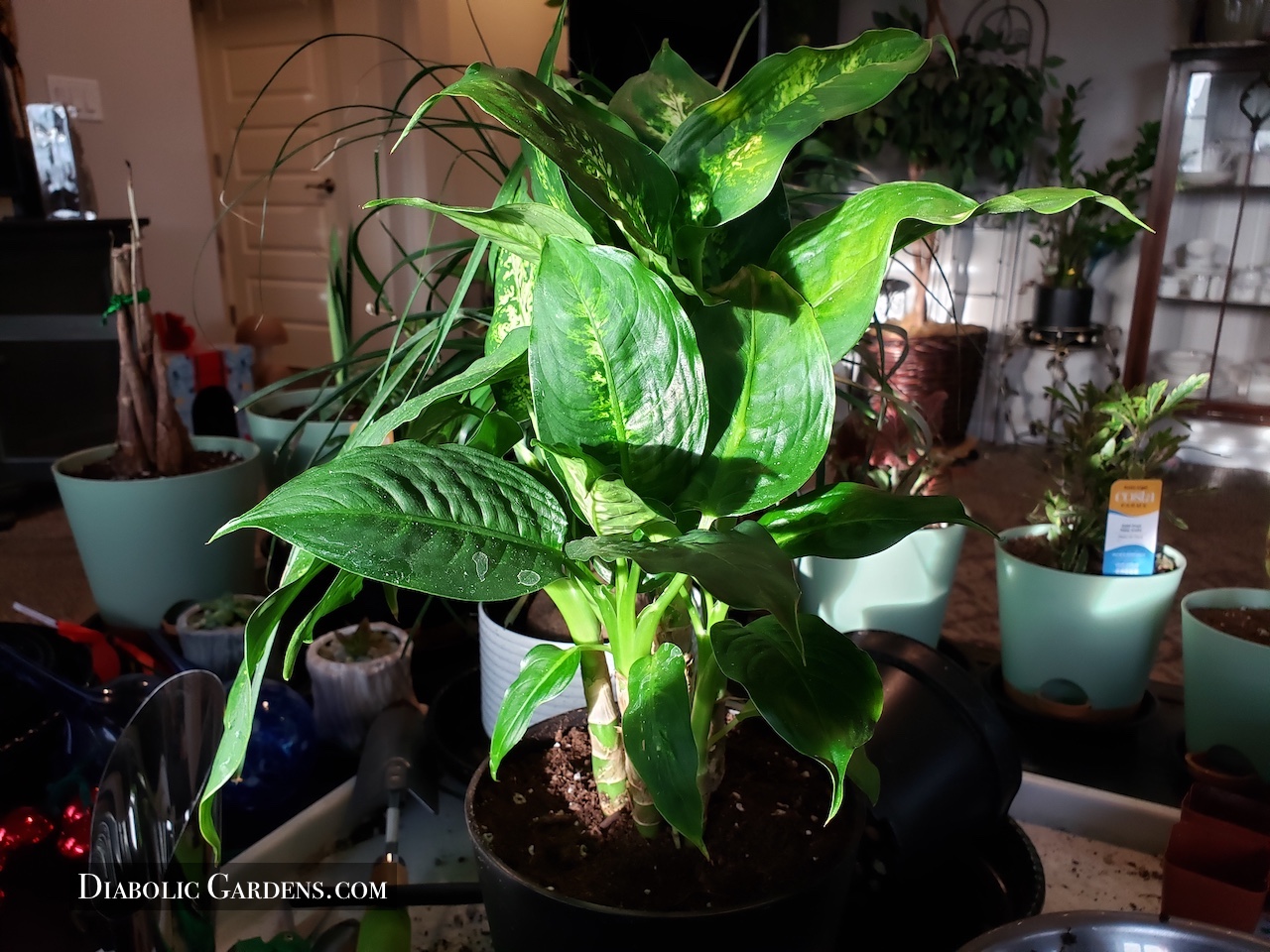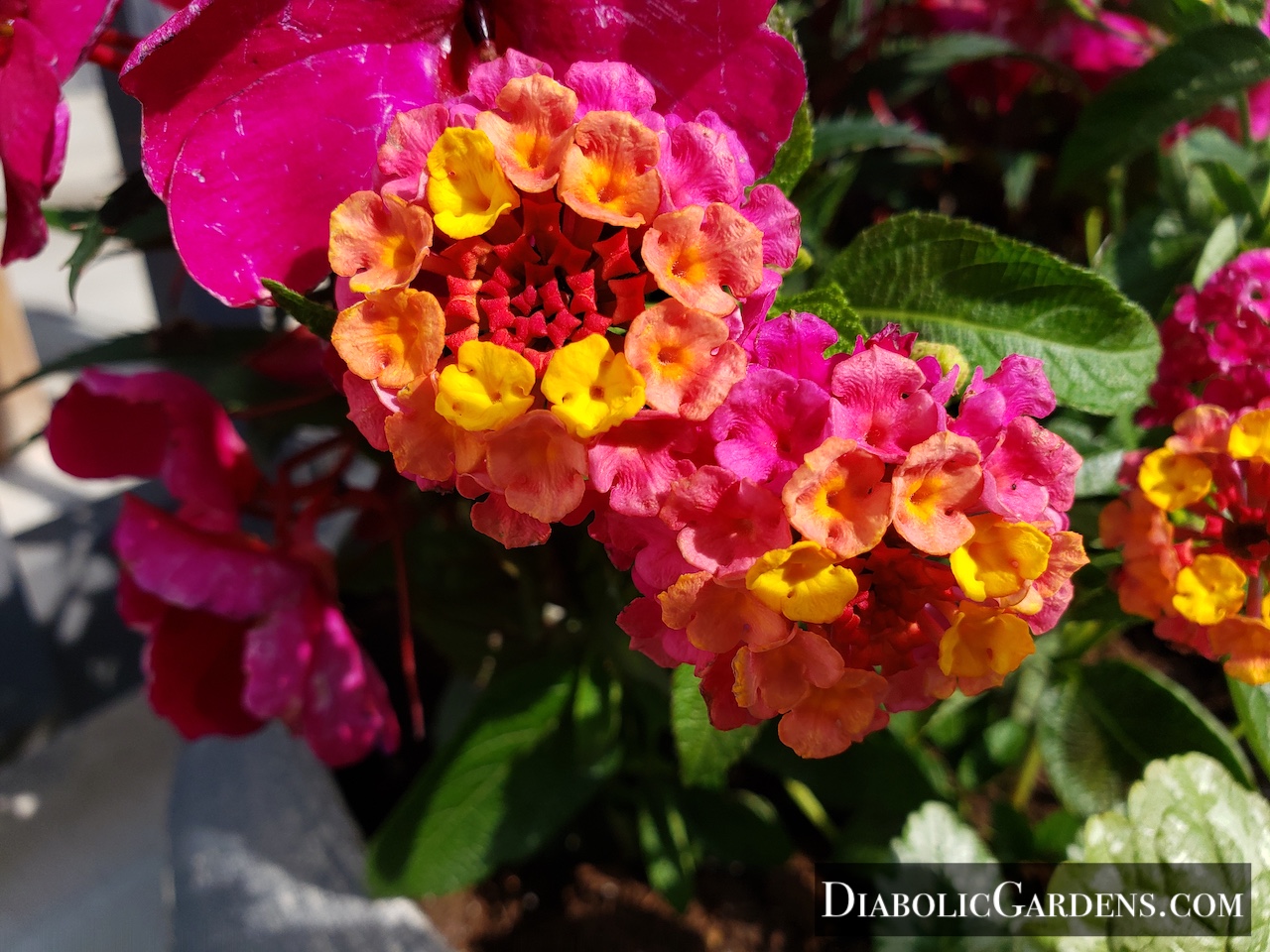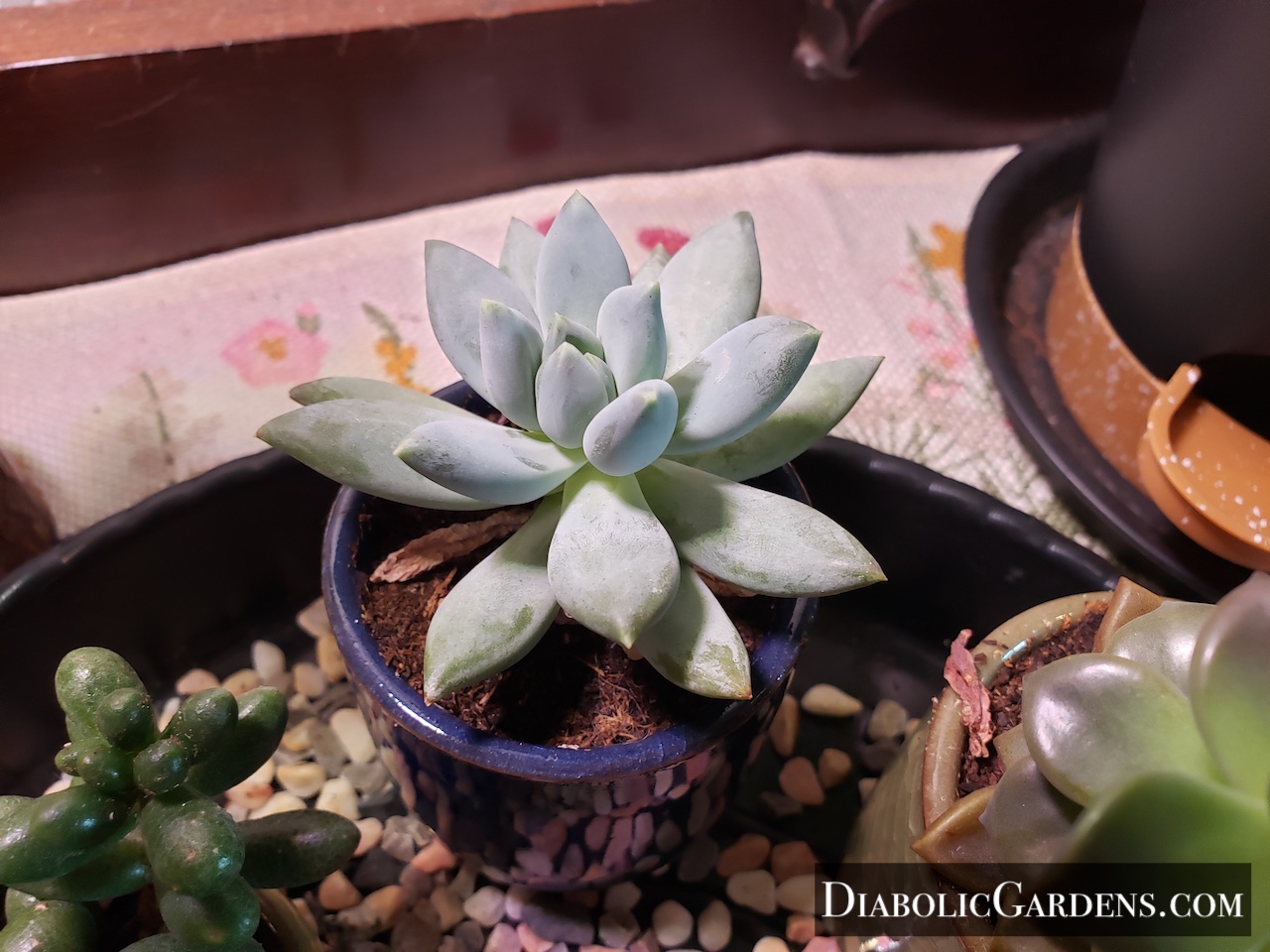Flora - Foliage
Dieffenbachia
Dieffenbachia, commonly known as dumb cane, is a popular houseplant known for its large, often variegated leaves.
It's a tropical herbaceous perennial native to the Americas and Caribbean.
Dieffenbachia is valued for its ornamental foliage and is relatively easy to care for, making it a good choice for both beginner and experienced plant enthusiasts.

Dieffenbachia
Dieffenbachia seguine
Adopted:
2024-12-01
Size:
Height up to 6 feet
Toxic:
Dieffenbachia contains calcium oxalate crystals that can cause burning, numbness, and swelling in the mouth and throat if ingested.
The plant is commonly known as dumb cane because it can temporarily paralyze the vocal cords.
It's important to keep it out of reach of children and pets.
Care:
Light:
Dieffenbachia thrive in bright, indirect light. Avoid direct sunlight, which can scorch their leaves. Dieffenbachia can tolerate low light conditions, making it a good choice for homes with less natural light.
Rotate the plant regularly to ensure even growth and prevent it from leaning towards the light source.
Water:
Water when the top inch of soil feels dry. Overwatering can lead to root rot, while under watering can cause brown leaf tips.
Humidity:
Dieffenbachia prefer high humidity. Mist them regularly, place them on a pebble tray, or use a humidifier.
Temperature:
Maintain temperatures between 60-80°F to avoid growth stunting or damage.
Soil:
Use a well-draining potting mix, such as a combination of regular potting soil, perlite, or orchid bark.
Fertilizer:
Fertilize during the growing season (spring and summer) with a balanced, water-soluble fertilizer diluted to half strength.
Pruning:
Dieffenbachia can be pruned to control size or promote bushier growth.
Propagation:
Dieffenbachia can be easily propagated through stem cuttings, either in water or soil. You can also propagate it by dividing the plant if it has multiple stems. Stem cuttings should have at least one node (the ring around the stem where leaves emerge).
Dieffenbachia is named after the German physician and botanist, J.F. Dieffenbach.
There are over 100 varieties of Dieffenbachia, each with unique leaf patterns and colors.
Dieffenbachia can help purify indoor air.


7/19/25

7/19/25
GROW LOG:
- 5/1/2025 - Adopted Channing
- 12/1/2024 - Adopted Brad


